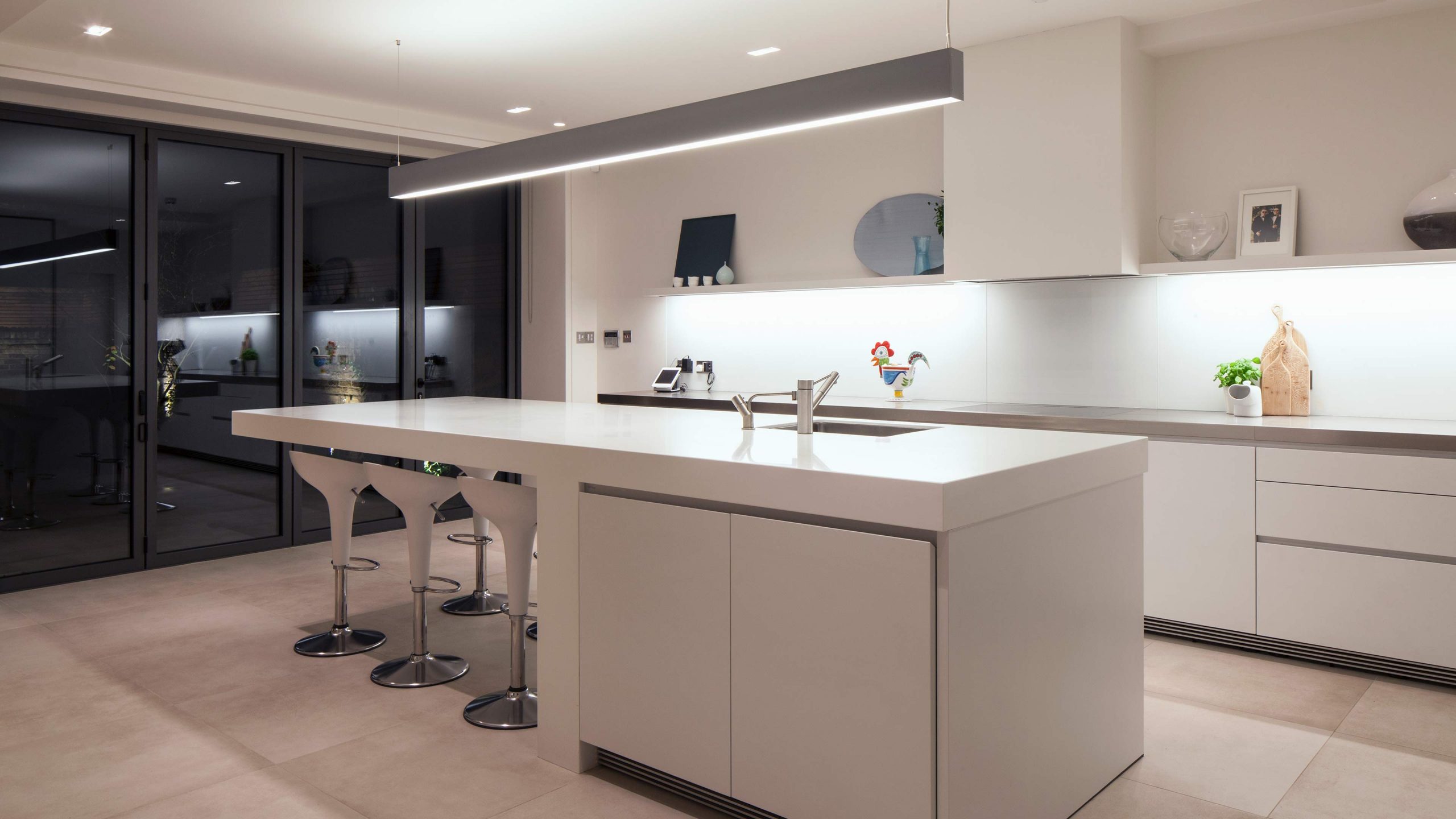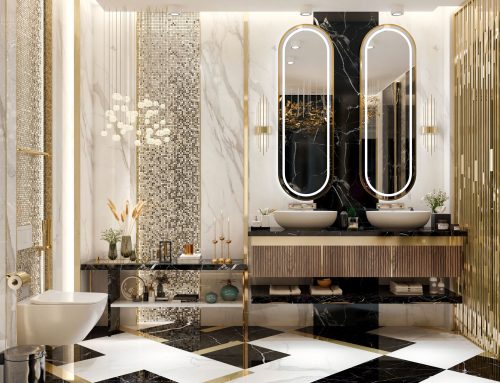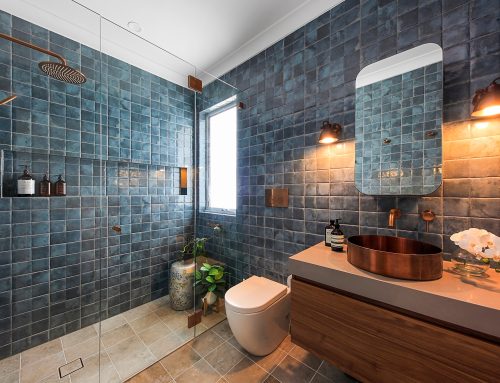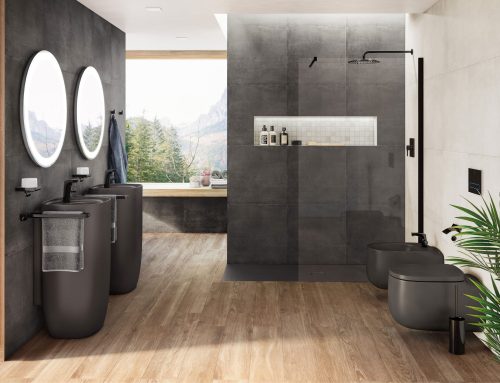Lighting is a fundamental aspect of kitchen design, playing a crucial role in both functionality and ambiance. Well-planned lighting can enhance visibility, improve task performance, and create a warm and inviting atmosphere. In this comprehensive guide, we’ll explore the benefits of installing layered lighting in the kitchen, including task lighting, ambient lighting, and accent lighting, and provide practical tips for achieving optimal illumination in your space.
Part 1: Understanding the Importance of Layered Lighting
Layered lighting involves strategically combining different types of lighting to create a balanced and versatile illumination scheme. By incorporating multiple layers of light, you can address various lighting needs and enhance both functionality and aesthetics in the kitchen. Here’s a breakdown of the different types of lighting typically used in layered lighting designs:
- Task Lighting: Task lighting is focused illumination that provides bright, shadow-free light for specific activities such as cooking, chopping, and food preparation. Task lighting is typically placed over key work areas such as countertops, islands, and stovetops to provide optimal visibility and improve task performance.
- Ambient Lighting: Ambient lighting is general illumination that creates a base level of brightness throughout the kitchen. Ambient lighting helps to evenly illuminate the space, making it feel bright and welcoming. Common sources of ambient lighting include ceiling-mounted fixtures, recessed lights, and track lighting.
- Accent Lighting: Accent lighting is decorative illumination that adds visual interest and highlights architectural features, artwork, or focal points in the kitchen. Accent lighting is used to create depth, texture, and ambiance, enhancing the overall aesthetic appeal of the space. Examples of accent lighting include under-cabinet lighting, toe-kick lighting, and pendant lights.
By incorporating all three types of lighting into your kitchen design, you can create a dynamic and versatile lighting scheme that meets the needs of various activities and enhances the overall ambiance of the space.
Part 2: Practical Tips for Layered Lighting Design
Designing a layered lighting scheme for your kitchen requires careful planning and consideration of various factors such as layout, function, and style. Here are some practical tips for achieving optimal illumination with layered lighting:
- Assess Your Lighting Needs: Begin by assessing your lighting needs based on the activities that take place in your kitchen. Identify key work areas such as countertops, islands, and sinks, and determine the type and intensity of lighting required for each area.
- Plan Your Lighting Layout: Create a lighting plan that outlines the placement of different types of lighting fixtures in your kitchen. Consider factors such as the size and layout of the space, the location of electrical outlets, and any architectural features or obstacles that may impact lighting placement.
- Layer Your Lighting: Incorporate multiple layers of lighting to address different lighting needs and create depth and dimension in the space. Install task lighting over work areas, ambient lighting throughout the kitchen, and accent lighting to highlight architectural details or decorative elements.
- Choose the Right Fixtures: Select lighting fixtures that are suitable for the specific tasks and functions they will serve. For task lighting, choose fixtures with bright, focused light output such as under-cabinet lights or recessed downlights. For ambient lighting, opt for fixtures with diffused or indirect light sources such as pendant lights or track lighting. For accent lighting, choose fixtures with adjustable beams or directional light output such as spotlights or wall sconces.
- Consider Lighting Controls: Install lighting controls such as dimmer switches, timers, and motion sensors to customize the intensity and timing of your lighting based on your preferences and activities. Lighting controls allow you to create different moods and ambiance in the kitchen and save energy by adjusting lighting levels as needed.
- Integrate Lighting with Other Design Elements: Coordinate your lighting design with other design elements in the kitchen such as cabinetry, countertops, and backsplash to create a cohesive and harmonious look. Choose fixtures that complement the style and finish of other materials in the space and integrate lighting seamlessly into the overall design aesthetic.
- Evaluate Lighting Quality: Pay attention to the quality of light produced by your fixtures, including color rendering index (CRI), color temperature, and brightness levels. Choose fixtures with high CRI values and color temperatures that mimic natural daylight for accurate color representation and visual comfort.
- Consider Energy Efficiency: Select energy-efficient lighting fixtures such as LED bulbs and fixtures with ENERGY STAR certification to reduce energy consumption and lower utility costs. LED lighting is not only energy-efficient but also long-lasting and environmentally friendly, making it an ideal choice for sustainable kitchen design.
Part 3: Implementing Task Lighting in the Kitchen
Task lighting is essential for providing bright, focused illumination over key work areas in the kitchen. Here are some practical tips for implementing task lighting in your kitchen design:
- Under-Cabinet Lighting: Install under-cabinet lights to illuminate countertops and work surfaces, making it easier to see while cooking, chopping, and preparing food. Choose LED strip lights or puck lights for discreet and efficient task lighting that minimizes shadows and glare.
- Recessed Downlights: Install recessed downlights over the sink, stove, and island to provide focused task lighting where it’s needed most. Position the fixtures strategically to avoid casting shadows and ensure even illumination over work areas.
- Pendant Lights: Hang pendant lights over islands, peninsulas, or dining areas to provide task lighting and add visual interest to the space. Choose pendant lights with adjustable height and directionality to customize the lighting output and create the desired ambiance.
- Track Lighting: Install track lighting with adjustable heads to provide flexible task lighting for multiple work areas in the kitchen. Position the track fixtures along the perimeter of the ceiling or above countertops to direct light where it’s needed most.
- Task Lighting Controls: Use dimmer switches or smart lighting controls to adjust the intensity of your task lighting based on your needs and preferences. Dimmer switches allow you to create different lighting levels for cooking, entertaining, and relaxation, while smart lighting controls offer advanced features such as remote access and scheduling.
Part 4: Enhancing Ambiance with Ambient Lighting
Ambient lighting creates a base level of brightness throughout the kitchen, enhancing visibility and creating a warm and inviting atmosphere. Here are some tips for enhancing ambiance with ambient lighting:
- Ceiling-Mounted Fixtures: Install ceiling-mounted fixtures such as flush-mount or semi-flush-mount lights to provide general illumination in the kitchen. Choose fixtures with diffused or frosted glass shades to soften the light and minimize glare.
- Recessed Ceiling Lights: Use recessed ceiling lights to provide ambient lighting in kitchens with low ceilings or limited space for other fixtures. Position the recessed lights evenly throughout the ceiling to create uniform illumination without casting shadows or dark spots.
- Indirect Lighting: Incorporate indirect lighting techniques such as cove lighting or toe-kick lighting to add a subtle glow to the kitchen and create a sense of depth and dimension. Indirect lighting can be used to highlight architectural features or create a soft and diffused ambiance.
- Lighting Layers: Layer ambient lighting with other types of lighting such as task lighting and accent lighting to create a dynamic and versatile illumination scheme. By combining different layers of light, you can achieve optimal visibility and ambiance in the kitchen.
- Natural Light Integration: Maximize natural light in the kitchen by incorporating windows, skylights, or glass doors to allow daylight to penetrate the space. Natural light not only enhances visibility but also creates a connection to the outdoors and promotes a sense of well-being and comfort in the kitchen.
- Dimmable Fixtures: Choose dimmable ambient lighting fixtures such as ceiling-mounted lights or recessed downlights to adjust the brightness levels according to the time of day or specific activities. Dimmable fixtures offer flexibility and control over the ambiance in the kitchen, allowing you to create different moods and atmospheres as desired.
Part 5: Adding Drama and Visual Interest with Accent Lighting
Accent lighting is the finishing touch that adds drama and visual interest to the kitchen, highlighting architectural features, artwork, or decorative elements. Here are some creative ways to incorporate accent lighting into your kitchen design:
- Under-Cabinet Lighting: Use under-cabinet lighting to illuminate the backsplash and countertops while adding a decorative element to the kitchen. LED strip lights or puck lights can be installed discreetly beneath upper cabinets to create a soft, diffused glow that enhances the ambiance of the space.
- Toe-Kick Lighting: Install toe-kick lighting along the bottom edge of base cabinets to create a dramatic effect and visually expand the space. LED strip lights or linear fixtures can be recessed into the toe-kick area to provide subtle, low-level illumination that adds depth and dimension to the kitchen.
- Glass Cabinet Lighting: Illuminate glass-fronted cabinets or display shelves with LED strip lights or puck lights to showcase glassware, dinnerware, or decorative objects. Lighting inside cabinets adds a warm and inviting glow to the kitchen and draws attention to the contents within.
- Artwork Lighting: Highlight artwork or architectural features such as alcoves or niches with adjustable wall-mounted or ceiling-mounted fixtures. Directional spotlights or track lights can be used to accentuate specific areas of interest and create visual focal points in the kitchen.
- Island Pendant Lights: Hang pendant lights above the kitchen island to provide task lighting while adding a decorative element to the space. Choose pendant lights with unique shapes, colors, or materials to complement the style and decor of the kitchen and create visual interest from above.
- Display Cabinet Lighting: Install lighting inside display cabinets or open shelving to showcase decorative objects, glassware, or collectibles. LED strip lights or puck lights can be recessed into the cabinet or shelf to provide even illumination and create a captivating display.
Part 6: Practical Considerations for Lighting Enhancements
In addition to design and aesthetics, there are several practical considerations to keep in mind when planning lighting enhancements for your kitchen. Here are some key factors to consider:
- Electrical Wiring: Ensure that your kitchen has adequate electrical wiring and outlets to support the installation of additional lighting fixtures. Consult with a qualified electrician to assess your electrical needs and make any necessary upgrades or modifications.
- Lighting Controls: Choose lighting controls such as dimmer switches, timers, or smart lighting systems to customize the intensity and timing of your lighting based on your preferences and activities. Lighting controls offer flexibility and convenience and allow you to create different lighting scenes and presets for various tasks and occasions.
- Lighting Design Services: Consider consulting with a professional lighting designer or kitchen designer to help you plan and implement your lighting enhancements effectively. A lighting designer can provide expert advice and recommendations based on your specific needs and preferences, ensuring that your lighting design achieves optimal functionality and aesthetics.
- Energy Efficiency: Select energy-efficient lighting fixtures such as LED bulbs and fixtures with ENERGY STAR certification to reduce energy consumption and lower utility costs. LED lighting is not only energy-efficient but also long-lasting and environmentally friendly, making it an ideal choice for sustainable kitchen design.
- Maintenance and Upkeep: Keep your lighting fixtures clean and well-maintained to ensure optimal performance and longevity. Regularly dust and wipe down fixtures, replace bulbs as needed, and schedule professional maintenance and servicing as recommended by the manufacturer to keep your lighting system in top condition.
Conclusion
Lighting enhancements play a crucial role in creating a functional, inviting, and aesthetically pleasing kitchen environment. By incorporating layered lighting with task lighting, ambient lighting, and accent lighting, you can achieve optimal visibility, enhance task performance, and create a warm and welcoming ambiance in your kitchen.
With careful planning, thoughtful design, and attention to detail, you can create a lighting scheme that not only meets your practical needs but also reflects your personal style and enhances the overall beauty and functionality of your kitchen space.
Here’s to illuminating your kitchen with style, sophistication, and functionality, and enjoying the many benefits of a well-lit and well-designed culinary sanctuary.
This comprehensive guide provides practical advice and inspiration for planning and implementing lighting enhancements in the kitchen, including tips for incorporating layered lighting with task lighting, ambient lighting, and accent lighting to achieve optimal functionality and aesthetics. Whether you’re renovating your kitchen or simply looking to enhance the lighting in your space, these tips will help you create a warm, inviting, and visually stunning kitchen environment that you’ll love spending time in.
A division of Ross Brothers Construction Click here to see all our completed projects




